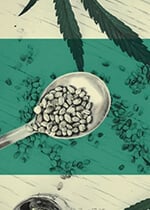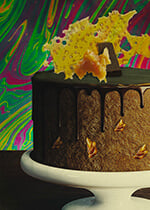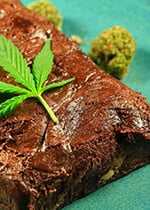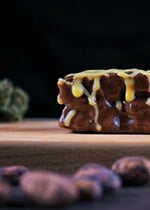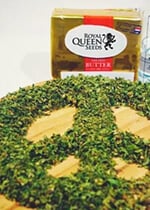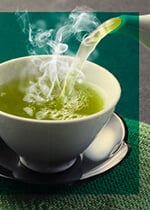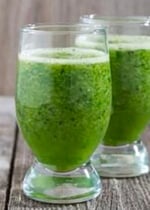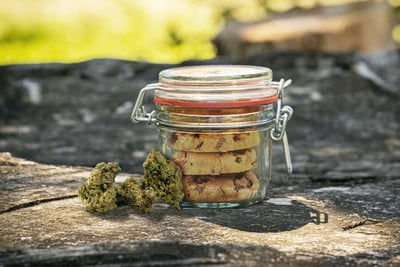.

How To Make Cannabis Edibles
Smoking or vaping the right cannabis strains will get you plenty high, but edibles allow you to take things one step further. See, eating THC converts it into a molecule that lasts much longer and offers near-psychedelic effects. We'll help you discover what makes edibles much stronger than other forms of weed, and we'll teach you how to make them!
Contents:
After using the herb for thousands of years, humans have developed many different ways to consume cannabis. These range from minimalist methods, such as pipes and joints, to the more complex and technological, such as vaporisers and CO2-extracted concentrates.
Through all this time, cannabis edibles have remained one of the most potent ways to consume the herb. This routine of administration changes the structure of THC and drastically amplifies the potency of the molecule.
Despite offering the most intense highs in the cannabis world, edibles are super easy to make. The process resembles that of cooking up a normal batch of brownies, cakes, etc., just with the addition of some cannabis buds or concentrate along the way.
In this article, we’ll help you discover everything you need to know about edible cannabis. Read on to find out why it hits so hard, learn the difference between THC and CBD snacks, and explore our exciting range of delicious recipes.
What are Weed Edibles?
In its most essential form, a cannabis edible is any sort of snack, dish, food, beverage, or other treat infused with weed. Human cultures have consumed cannabis in this way for millennia. For instance, Bhang—a weed-infused drink consumed at Hindu festivals—dates back to at least 1,000 BC.
More recently, though, cannabis enthusiasts have figured out how to cook recipes with the herb. What started as space cakes and other sweet treats in the 1960s has evolved into a bustling market of delicious snacks and high-end (pun intended) cuisine. New legislation has also paved the way for cannabis edibles, taking them from the kitchens of experimental enthusiasts to world-class restaurants and commercial outlets.
11-Hydroxy-THC And The Potency of Edibles
Edible weed allows users to take in the phytochemicals found in cannabis much differently. Of course, as opposed to smoking, oral cannabis passes through the digestive system. This takes the active constituent of cannabis—THC—and transforms it into a molecule that’ll elevate the mind into new places. This substance is known as 11-hydroxy-THC.
We’ll elaborate more on that in a second, but you may be wondering how this conversion is possible. After all, oral THC goes through a metabolic process known as first-pass metabolism. Many drugs lose potency through this route of administration, but THC actually comes out of the other side stronger. What happens to it that allows this enhancement of psychoactivity?
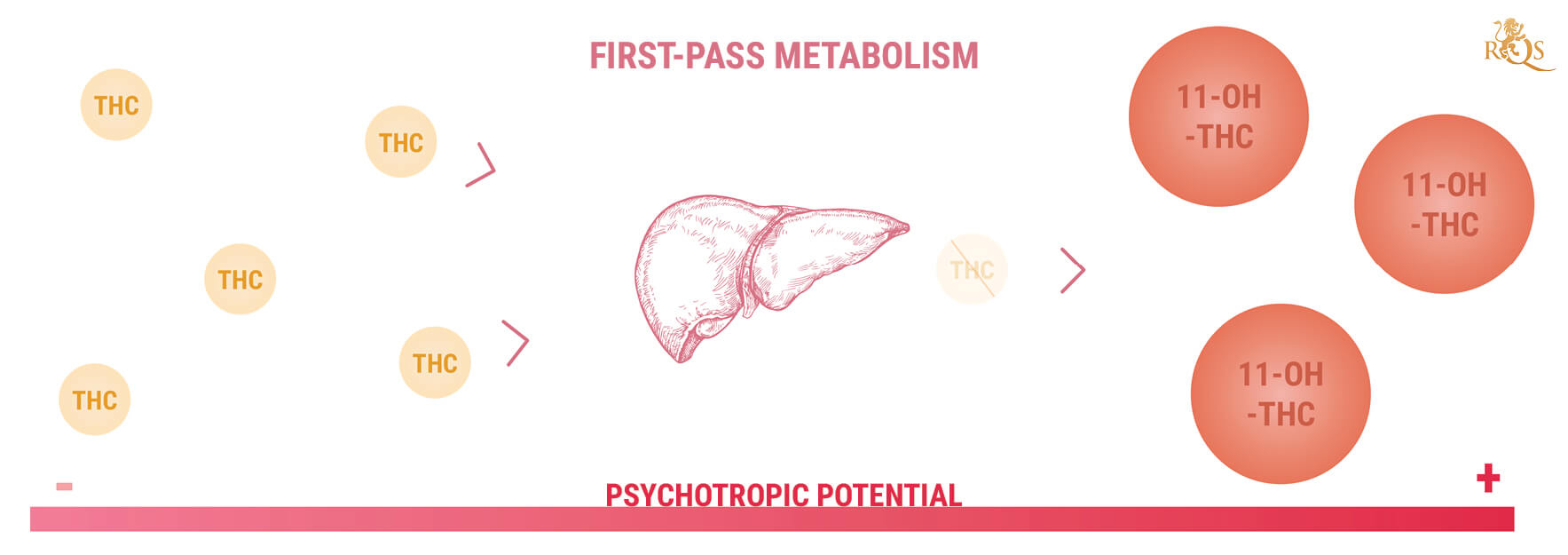
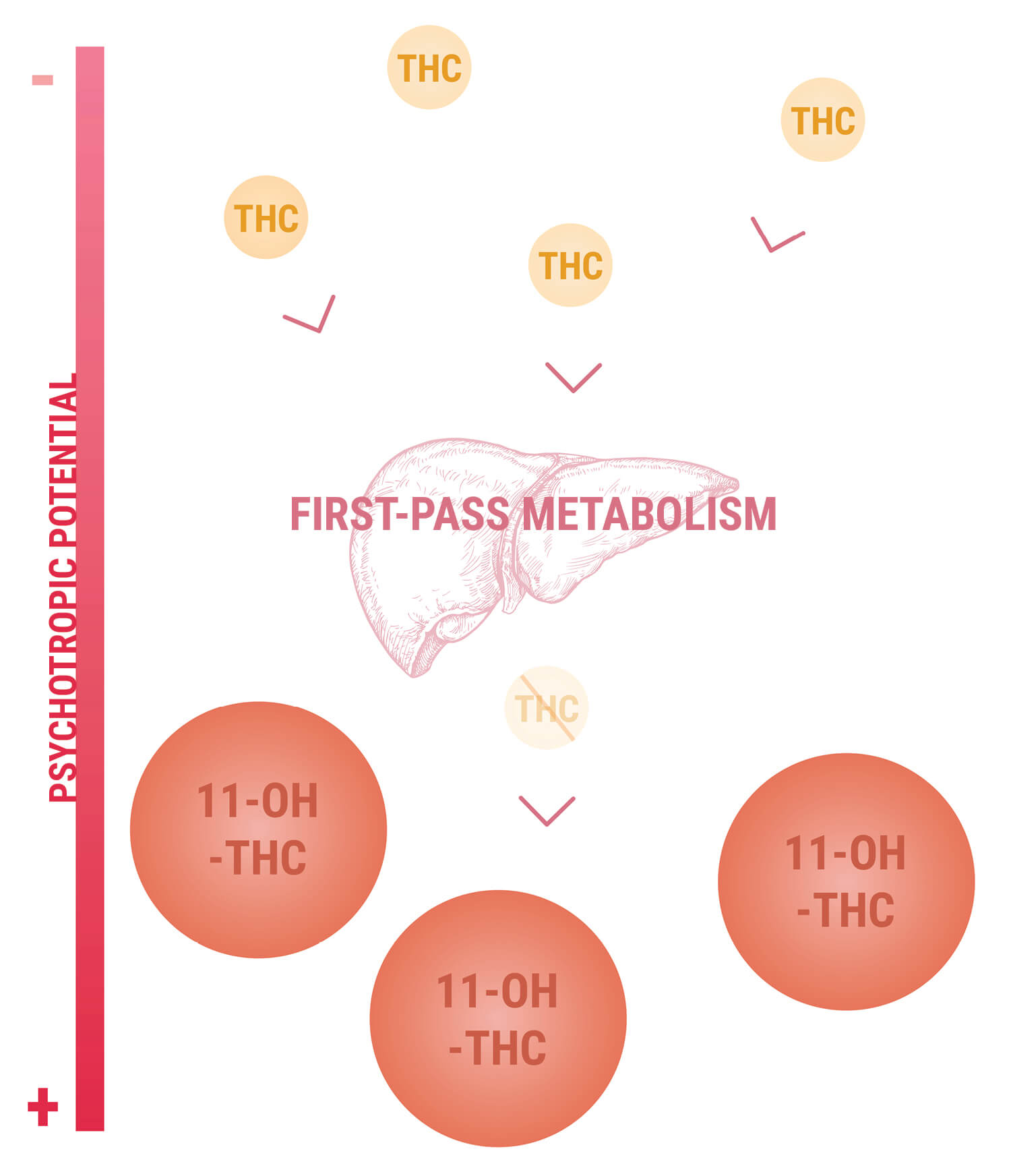
What Makes Edibles So Potent?
Following digestion, the body shuttles THC off to the liver for processing. Upon arrival, this vital organ metabolises THC into the derivative 11-hydroxy-THC. This substance then re-enters the bloodstream, makes its way through the blood-brain barrier, and begins lighting up CB1 receptors.
The Benefits of 11-hydroxy-THC and Edibles
Edible cannabis and 11-hydroxy-THC exert unique effects that give them certain advantages over smoked and vaped cannabis. Here are the top benefits of edible weed.
- They pose no respiratory risk: The effects of cannabis smoke on the lungs remain controversial, but it's become known that cannabis generally produces more tar than tobacco when burned. Sure, the effects of cannabinoids appear to offset a lot of the damage[1], but there's still a risk of catching a lung infection or bronchitis. Regardless, since eating weed involves no smoke inhalation, it eliminates any risks of detrimental respiratory outcomes.
- They're accessible: Edibles are easy to make—anyone can do it. You’ve probably got most of the ingredients you need to whip up some brownies in your kitchen cupboards right now. Simply follow a recipe like you would with any other dish.
- They're more discrete: Smoking and vaping release terpenes into the air, which gives rise to an incredibly recognisable aroma. Edibles eliminate this dilemma. Users can simply take a bite out of a brownie and chew on a couple of gummies to get the desired effect without arousing suspicion.
- They're more potent: Recreational users gain a much more intense high from edibles, as 11-hydroxy-THC offers a mental journey more similar to psychedelics than cannabis. Even lower doses result in an intense stoned sensation. Decide to push the boundaries, and you’ll likely experience auditory and visual sensations typically associated with the classic psychedelics.
- They last longer: Because edibles pass through the digestive tract, they take longer to kick in. As opposed to the high from smoking, which hits instantly, peaks at around 30 minutes and lasts for 2–4 hours, the edible high starts an hour after consumption, peaks 2–3 hours after onset, and lingers for between 6 and 8 hours. This also benefits those that use cannabis to alleviate certain symptoms, as the longer-lasting effect will keep symptoms at bay for longer than smoking, vaping, or taking oil.
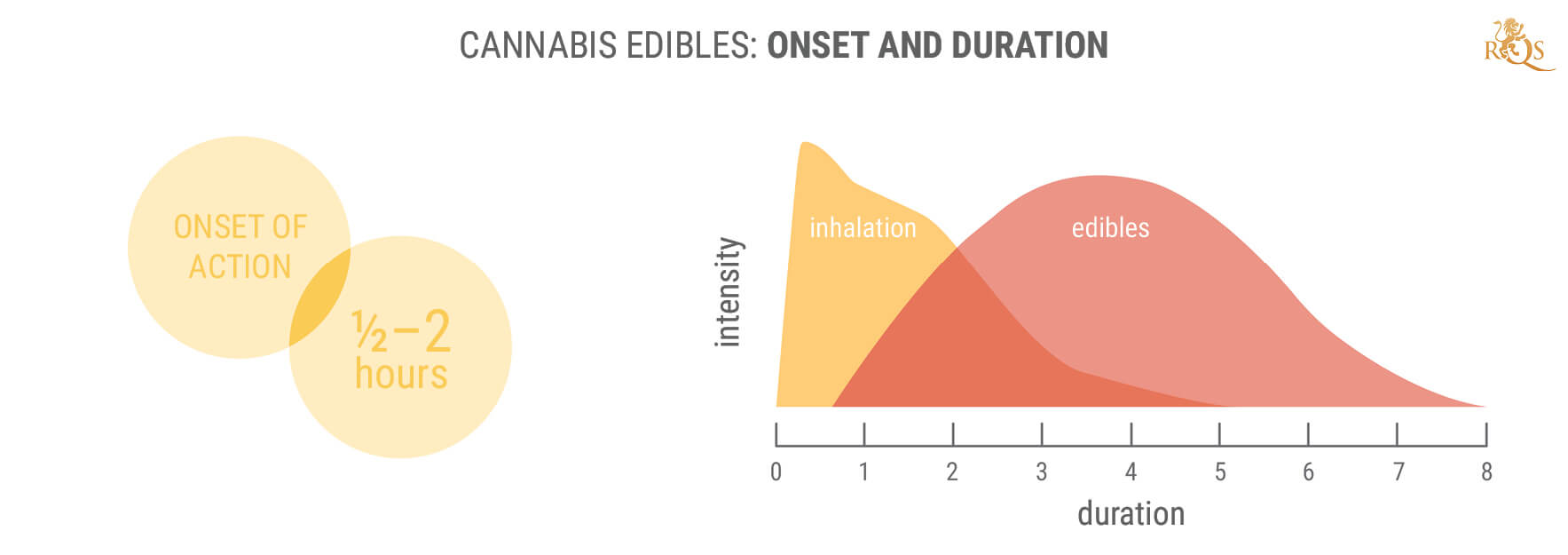
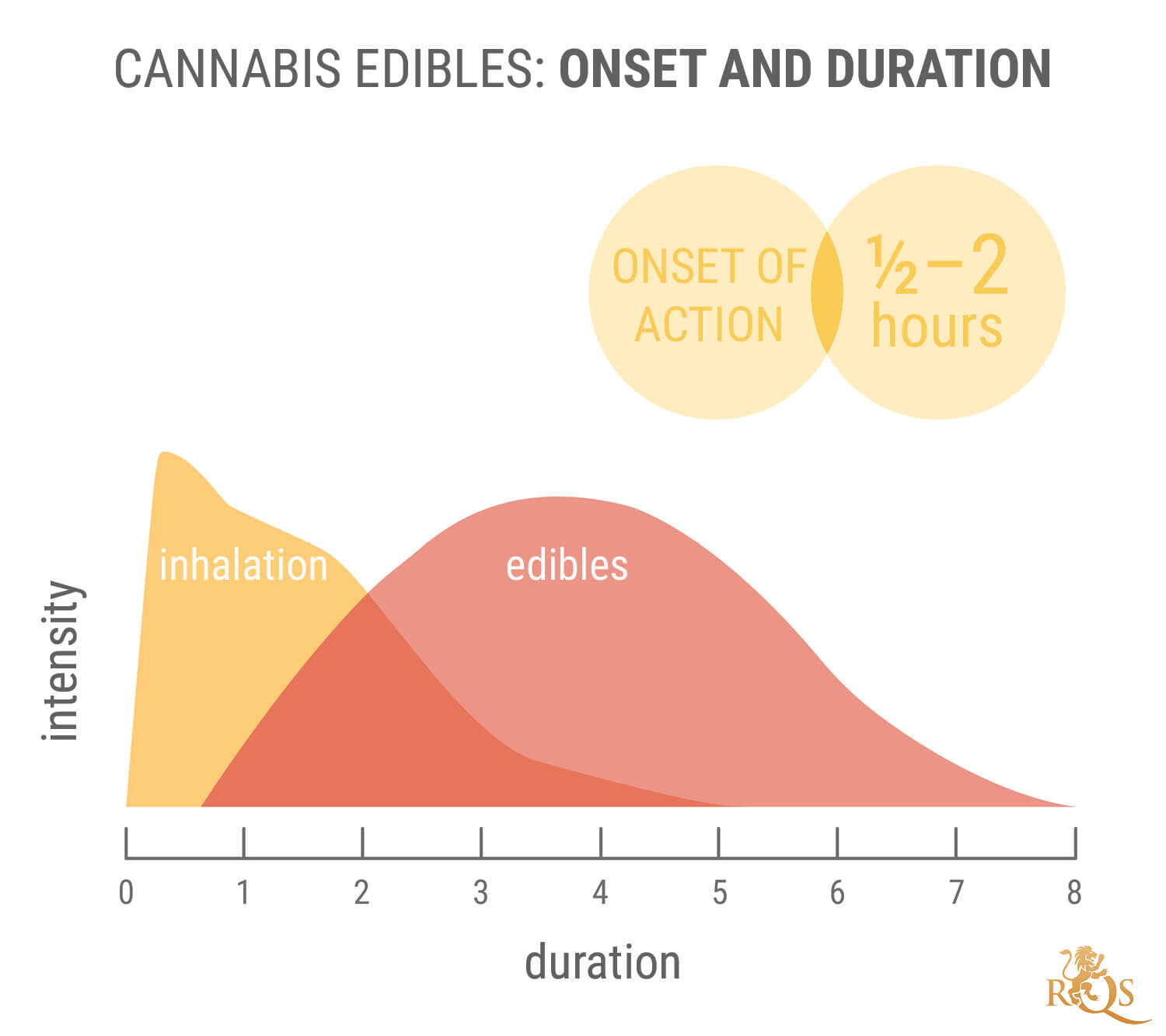
How to Make THC Edibles
Even if you’re experienced at smoking cannabis, you should always go easy on the THC when cooking edibles the first time. The difference between smoked and oral THC catches many people off guard, and a bad experience awaits if you don’t pace yourself.
Cook with Cannabutter or THC-Infused Oil?
Some home chefs like to start out with dried cannabis flowers. Using these buds, they craft versatile cannabutter that fits into almost any dish. Simply replace butter or coconut oil with cannabutter in any recipe that calls for these ingredients.
Alternatively, pre-made THC-infused oil works around this process and offers an instant source of cannabinoids. You’ll blend it into the butter or oil the same way, and you won’t have to worry about decarboxylation, which is the process of heating up buds to activate the cannabinoid precursors within them.
Preparation
Before getting down and dirty in the kitchen, you’ll need to prepare your material. Follow the easy steps below to make sure you have everything ready before you start whipping up some magic in the kitchen.
-
Select Your Strain or Oil
First things first, you need to choose what kind of strain or oil you want to use. There are thousands of cultivars available, and each one produces its own effects. If you want to learn more about what’s out there, explore the Royal Queen Seeds archives to choose your ideal strain. If you want to start the process using oil, check out our full-spectrum, CO2 extracted, tested range. For high-THC oils, take a trip to your local dispensary or cannabis club.
-
Prepare Your Flowers
You'll need to prepare your flowers accordingly before cooking. After drying and curing your buds after harvest, use a grinder to grind them down like you would before smoking or vaping. This increases the surface area of your plant material, making the activation more efficient.
-
Decarboxylation
Speaking of activation, although your ground weed smells fantastic, it doesn’t actually contain any THC or CBD yet. Crazy, right? Instead, these molecules exist as cannabinoid acids in the form of THCA and CBDA. These molecules feature their own unique effects but act slightly differently to their corresponding cannabinoids.
The process of decarboxylation converts THCA into THC and CBDA into CBD. It sounds technical, but as we mentioned before, it simply involves heating up your bud. Just place your ground weed onto a lined baking tray, and slide it in a preheated oven at 110°C for 45 minutes.
Once that's done, use it to whip up some cannabutter or weed-infused oil, and carry on with the usual recipe for whatever you're making.
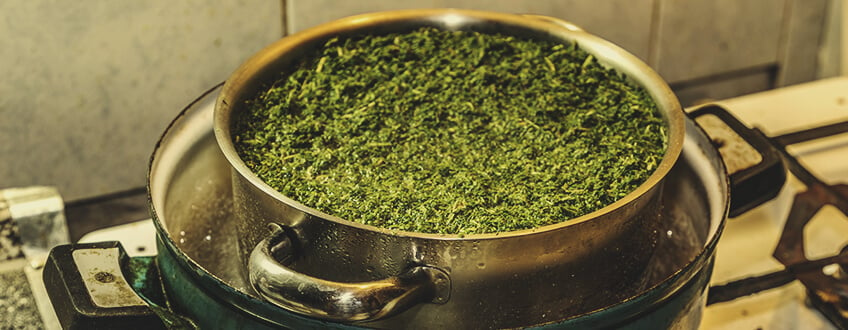
How to Make CBD Edibles
Edibles aren’t only a great way to get more THC into your system. CBD-rich edibles offer huge doses of this non-psychoactive cannabinoid. These delicious options offer a clear-headed alternative to medicinal and recreational users alike. Unlike THC, CBD remains largely intact through digestion, and doesn’t convert into a more powerful and longer-lasting molecule.
The process of making CBD and THC edibles appears almost identical. However, there are a few key differences that are worth paying attention to. Most importantly, you’ll need to choose the right starting material.
-
Cook With Dried Buds
Cooking with dried flowers allows budding cannabis chefs to start their recipes from scratch. This makes the process much more rewarding for some, and also creates more flexibility in terms of dose, flavour, and effect.
Be sure to explore the cannabinoid profile of each cultivar to get an idea of the effect. Plus, look carefully at the terpene profile so you know how these buds will impact the flavour of your recipe. You can choose between fruity, sweet, peppery, earthy, sour, and countless other flavour varieties.
-
Cook With CBD Oil
Cooking with CBD oil, as it does with THC oil, speeds up the process. Instead of making your own extract, you can add it straight into your favourite recipes and dishes. To make the most of your cannabinoid-infused cuisine, you should source the best quality oil possible. In a saturated market, the quality standard of CBD varies drastically. We recommended looking out for three factors that guarantee a great product.
Firstly, select a full-spectrum oil, as these formulas contain all of the beneficial compounds found in cannabis, not just CBD. Secondly, seek CO2-extracted oils, as this method of preparation maximises the concentration of the desired phytochemicals while leaving everything else behind, including potential contaminants. Finally, choose a third-party lab-tested CBD oil; the testing process will confirm the absence of chemical residues and heavy metals.
Dose Properly
Getting your dose right will increase the odds of an enjoyable experience and minimise the chances of overdoing things. Calculate the dose of your THC edibles to avoid bad trips. Working out the right amount of CBD to use will also help you figure out your sweet spot between not feeling anything and being a bit too relaxed, although you thankfully won't have to worry about getting too high.
Enjoy The Ride, But Proceed With Caution
Now you’re all set to make your own edibles at home! Crafting your own makes for a satisfying and rewarding experience, and allows you to step close to being a more self-sufficient cannabis user. However, remember the points made above. Edibles are no joke. One too many bites and you’ll find yourself in an intense and sometimes unpleasant headspace. Take things low and slow to get the most out of your cannabis-infused creations.
Take Your Cooking Skills To The Next Level
Take Your Cooking Skills To The Next Level
Cakes, Brownies, And Butter: Learn The Basics
Cakes, Brownies, And Butter: Learn The Basics
Master The Art Of CBD Edibles
Master The Art Of CBD Edibles
- Scoping Review and Meta-Analysis Suggests that Cannabis Use May Reduce Cancer Risk in the United States https://www.liebertpub.com



























